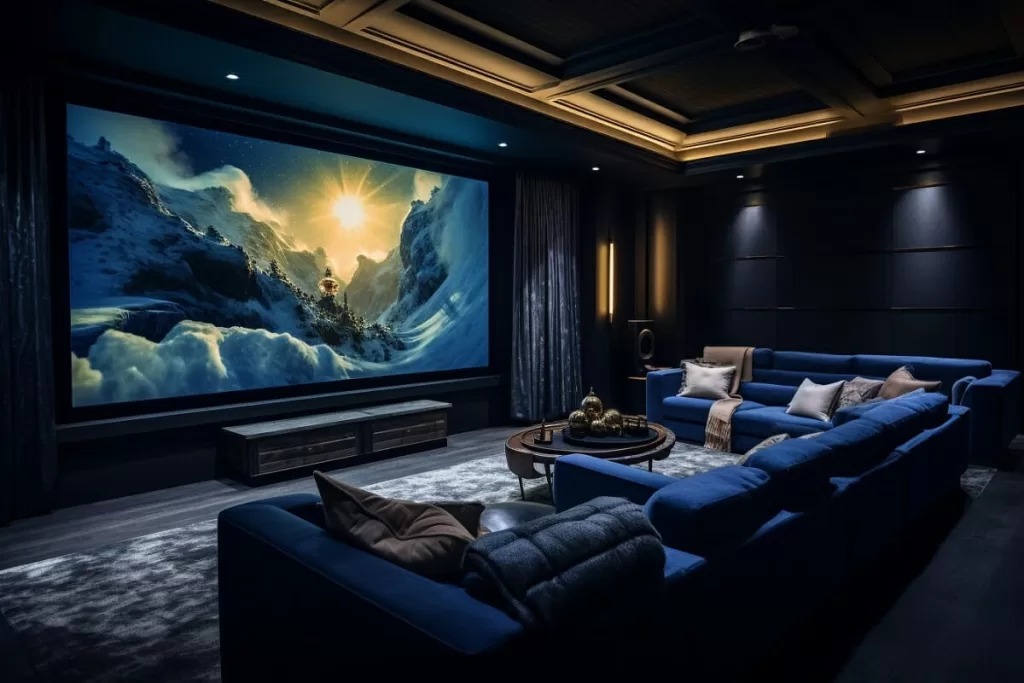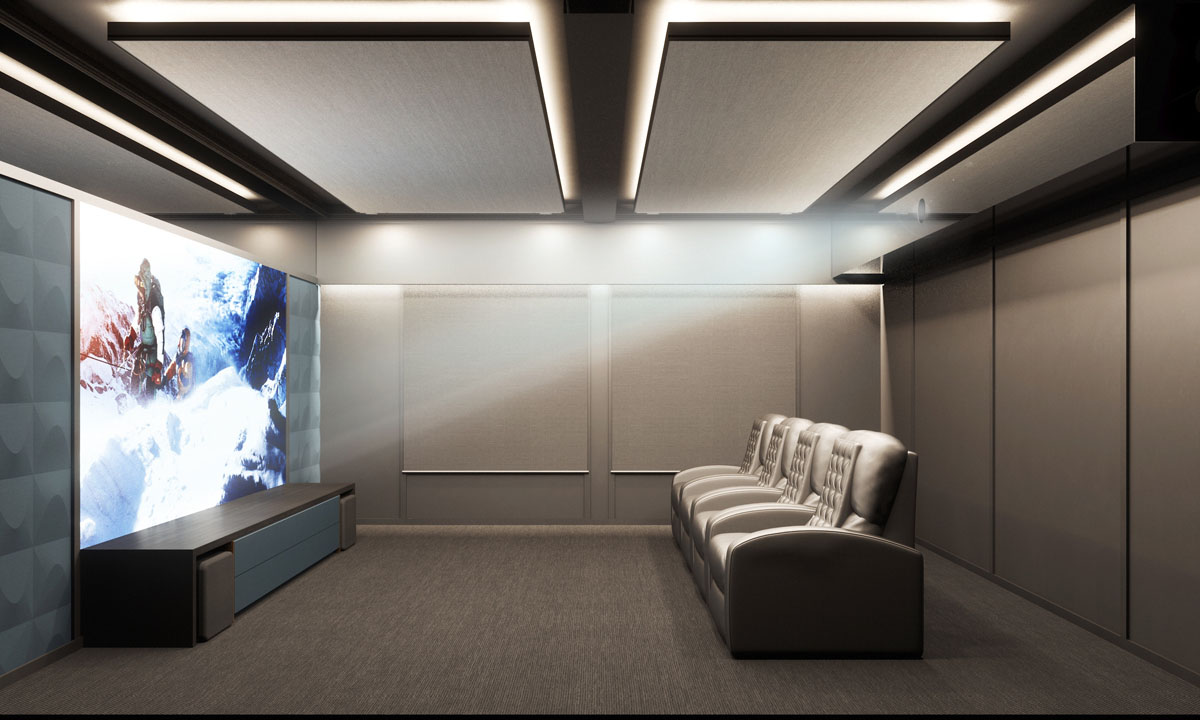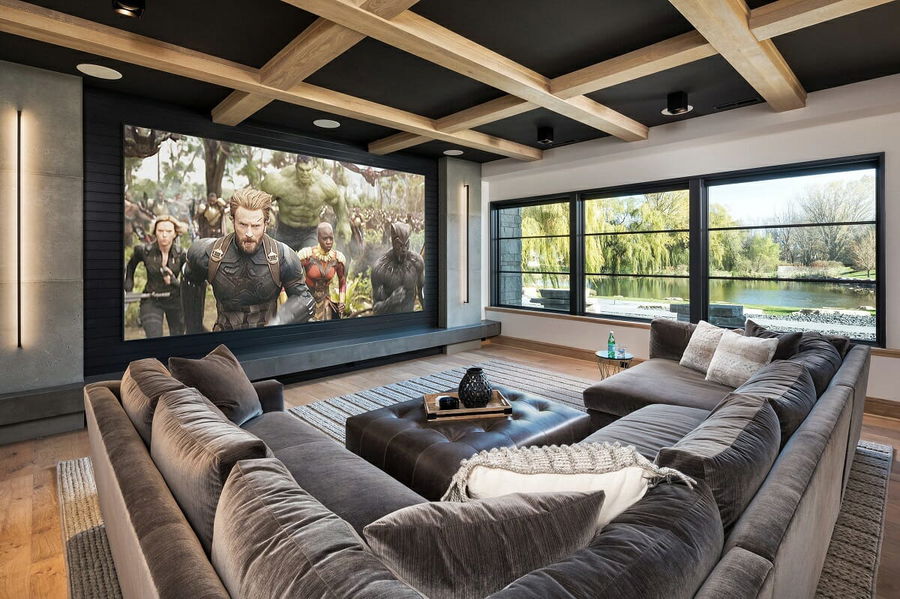Home Theater Tampa: Bringing Cinematic Experiences Directly to You
Home Theater Tampa: Bringing Cinematic Experiences Directly to You
Blog Article
Home Theater 101: Whatever You Need to Know for a Cinematic Experience in the house
Developing a home cinema that equals the cinematic experience of a business theater includes careful consideration of multiple components, including screen option, sound systems, and area design. Whether you are considering the excellent display size or the details of border sound, understanding these basics is crucial.
Picking the Right Screen
When establishing a home cinema, selecting the right display can make or break the watching experience - home theater installation tampa. The display functions as the focal point of your arrangement, affecting picture top quality, checking out angles, and general aesthetic. Secret aspects to think about include screen resolution, dimension, and kind
First, identify the suitable screen dimension based on your room measurements and seating distance. A basic guideline is to sit roughly 1.5 to 2.5 times the diagonal display size for optimal viewing. Next, pick between various display kinds, such as fixed-frame, motorized, or retractable screens, each offering unique advantages. Fixed-frame displays normally offer the most effective photo high quality, while mechanized options enable flexibility in area usage.
Resolution is one more critical variable. For a really immersive experience, consider a screen developed for 4K and even 8K web content, guaranteeing sharpness and quality. In addition, think about the screen's gain, which affects brightness and contrast; a higher gain can boost illumination in well-lit rooms, while a reduced gain may be preferable for darker settings.
Selecting Sound Equipment
Audio equipment is an important component of any kind of home movie theater system, considerably improving the overall viewing experience. The selection of audio equipment can figure out the depth, clearness, and immersion of noise, critical for developing a cinematic atmosphere.
When selecting audio tools, consider a border audio system, which generally consists of a receiver, multiple speakers, and a speaker. A 5.1 or 7.1 channel system is recommended, where the very first number represents the audio speakers and the second the speaker, providing an immersive soundscape. The receiver is the heart of the system, handling audio and video clip signals, and should sustain contemporary styles like Dolby Atmos for a boosted spatial experience.
Quality audio speakers are essential; appearance for models that use a balanced sound account with great bass feedback. Floor-standing audio speakers can generate richer noise, while bookshelf choices save room. In addition, take into consideration cordless options for ease of setup, although wired systems frequently provide remarkable performance.

Ideal Seating Plans
Producing a perfect home theater experience hinges substantially on optimal seating plans. The arrangement of seats plays a critical function in both comfort and seeing quality, directly impacting the total cinematic experience.
First, consider the screen size and seeing range. An usual standard is to place seats at a range roughly 1.5 to 2.5 times the diagonal dimension of the display. This makes certain an immersive experience without stressing the eyes.
Following, altitude is important. If your seating remains in a tiered format, the back rows need to be greater than the front to stay clear of blockages. For flat seating, guarantee that the front row is not also near to the display, which everybody has a clear view.
Additionally, think about the plan in regards to social characteristics. Team seating can enhance the public experience, while specific seats might be liked for personal watching.

Lastly, focus on comfort with ergonomic seats that sustains extended watching durations. Incorporating recliner chairs or cushioned seats can considerably improve the experience, making the home cinema a preferred location for both enjoyment and leisure.
Lighting and Atmosphere
Effective lights and setting are vital components of a properly designed read more home cinema, as they substantially influence the checking out experience. The appropriate lights can enhance the cinematic feeling, while bad selections can interfere with it. For optimal outcomes, think about a split lights technique click site that consists of ambient, task, and accent lights.
Ambient lighting offers basic illumination, making sure that the space is not entirely dark, which can strain the eyes. Dimmer buttons are highly advised, enabling for changes based on the content being viewed. Task lights, such as wall sconces or floor lamps, provides functional lighting for activities like analysis or browsing the room without disrupting the general environment.
Accent illumination can be made use of to highlight building features or create prime focus, adding deepness and rate of interest to the space. LED strip lights behind displays or along racks can offer a subtle radiance that enhances the visual experience without overwhelming the audience.

Wiring and Installation Tips
A tactical wiring setup is important for achieving ideal performance in your home cinema system. Appropriate electrical wiring not just guarantees high-quality audio and video clip signals yet additionally improves the overall aesthetic of your area. Begin by drawing up your design, determining where each part will certainly be positioned, including your screen, speakers, and receiver.
When picking wires, focus on top quality, appropriately determined wiring check out here to minimize signal loss. HDMI cords must be made use of for video connections, while speaker cable must match the requirements of your audio speakers and amplifier. Go with in-wall rated cords to abide by safety and security requirements and keep a clean appearance.

Final Thought
In summary, producing a remarkable home movie theater experience requires cautious consideration of various components, consisting of display selection, audio tools, seating arrangements, lights, and wiring. By focusing on these aspects, a motion picture atmosphere can be successfully reproduced, allowing for immersive watching experiences that match typical movie theater setups.
Producing a home movie theater that matches the cinematic experience of a business theatre involves careful consideration of several elements, consisting of screen selection, audio systems, and room format.When establishing up a home movie theater, choosing the right screen can make or damage the watching experience. Next off, choose between different display types, such as fixed-frame, motorized, or retracting displays, each offering unique advantages. For a genuinely immersive experience, consider a screen developed for 4K or even 8K web content, making certain intensity and clarity.In recap, creating a phenomenal home theater experience calls for mindful consideration of different aspects, including screen choice, audio devices, seating arrangements, lights, and wiring.
Report this page